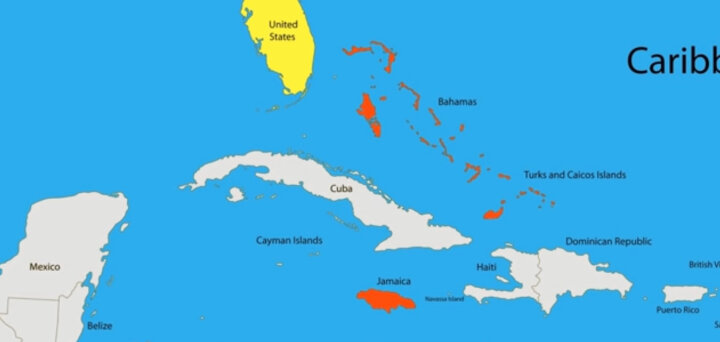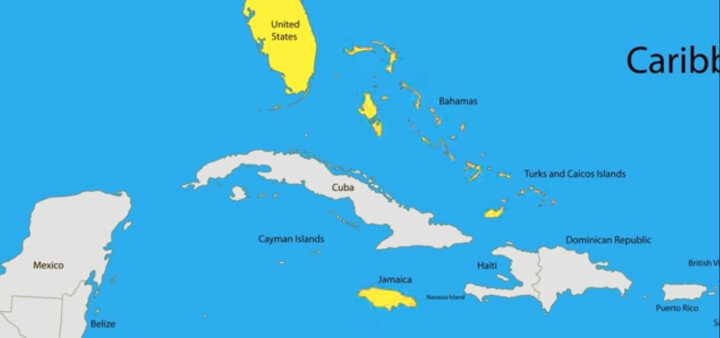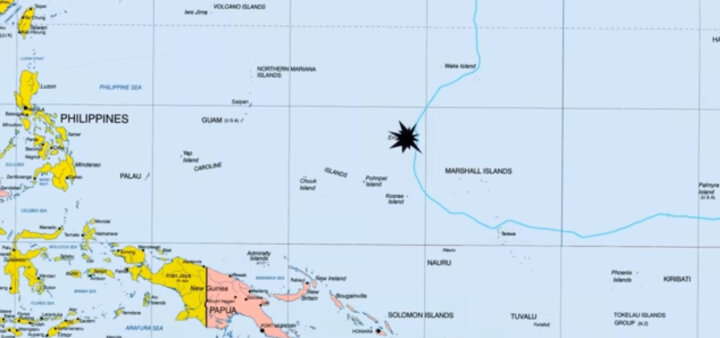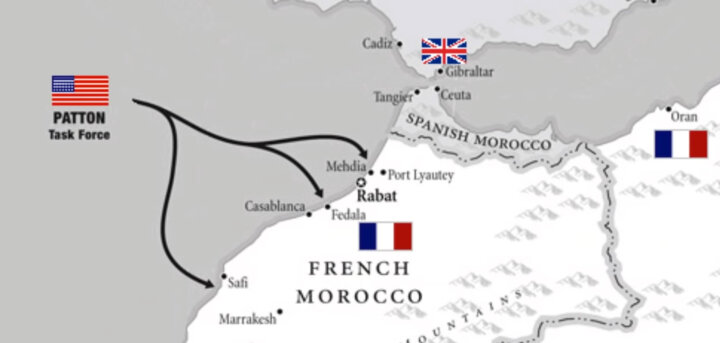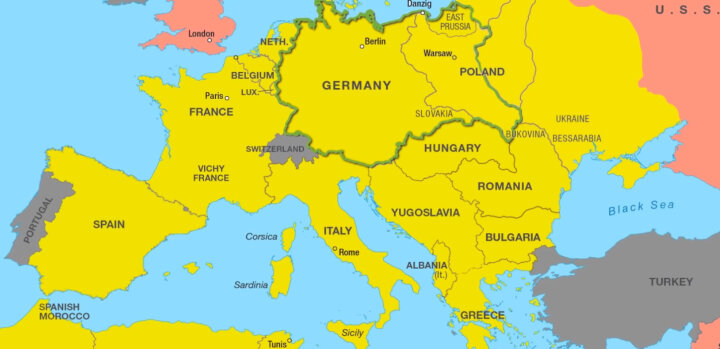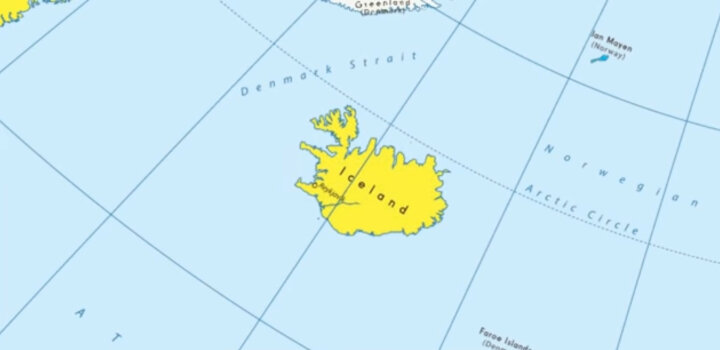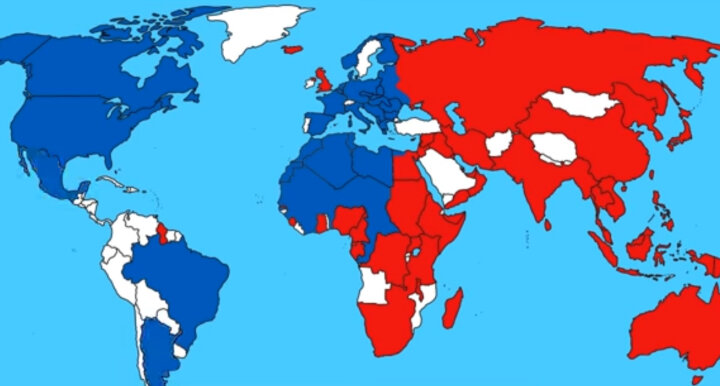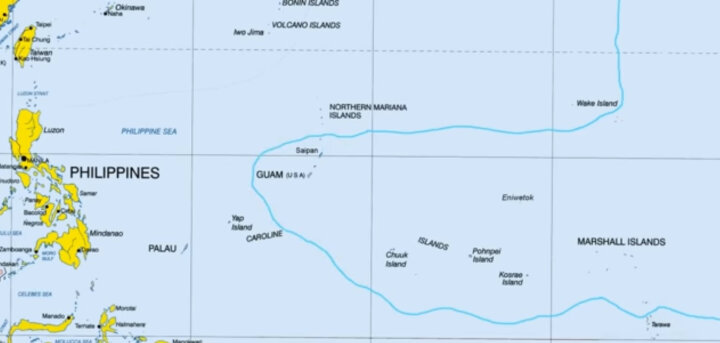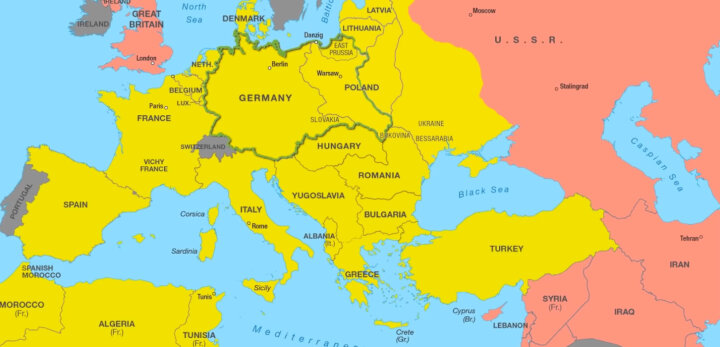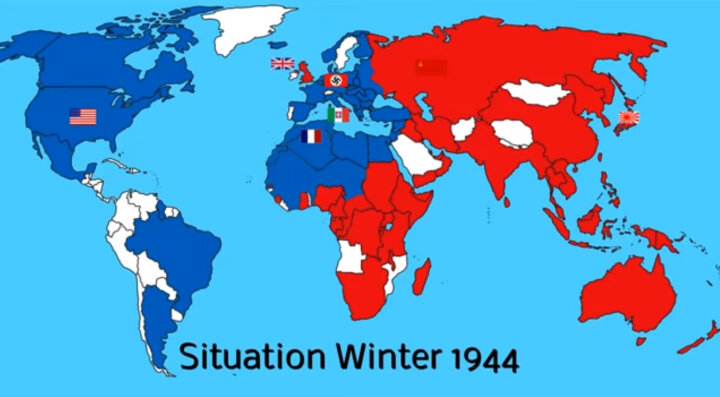What if the US joined the Axis in World War II? 1944
Follow-up to this post:
https://similarworlds.com/news/world-war/5037927-What-if-the-US-joined-the-Axis-in-World-War-II-1943
If you're behind, check it out if you want to see what leads up to the series of events detailed in this post.
To start from the beginning:
https://similarworlds.com/news/world-war/5037835-What-if-the-US-joined-the-Axis-in-World-War-II-1939-1941
January 5
A British naval force of 9 battleships, 15 cruisers, 19 carriers and 33 destroyers leaves Scapa Flow directed to the American coast. There are no diversionary movements, the British want to fight the whole US fleet. America cannot permit that such a force arrives so close to their shores, they have to react.
January 11
In the morning, there is the clash near Bermuda that becomes known as the Battle of the Sargasso Sea. The British have a strong numerical advantage, except in aircraft carriers. But the carriers are the new capital ship of naval warfare and Britain's naval superiority in terms battleships is irrelevant. A battleship could fire sums of 1000 kg shells to a range of 30 km. A plane like the Grumman TBF Avenger could drop a 1000 kg bomb at a range of hundreds of km with more precision. The British carriers have much less aircraft on board, often obsolete biplanes, and the fleet has few modern anti-aircraft guns. Co-operation with the RAF is limited. The battle is short, but fierce. The US Memphis cruiser is hit by naval gunfire and sunk, other 7 destroyers are lost. The Santee and the Bogue US escort carriers are torpedoed and sunk, while the Tirpitz is hit by a 380 mm salvo, but survives. The Germans lose two U-boats. The British lose a carrier, the battleship HMS Duke of York, 2 cruisers, 5 destroyers and has several ships damaged. At the end of the day, the British disengages, ending the battle.
The outcome is inconclusive with both sides claiming victory. The US lost more ships and twice as many sailors and aircraft, but succeeded in driving back the Royal Navy and the British plan of destroying a substantial portion of the US fleet also failed. But the British losses are not replaceable and wiping out the US Navy would be pointless. America would just rebuild the Navy, getting the UK into a perpetual and unwinnable race. From here on, the Royal Navy will concentrate their fleet on the defense of Great Britain, leaving the gates to Europe open.
January 26
In the Atlantic, the Axis now has predominance. The first American forces, the II Corps under the command of Clark arrives at Bordeaux, as well as the first US convoy, carrying canned meat and spare parts. It will be followed by an increasing flow of material and before the end of the war, the Axis will receive 18 million tons of weapons and supplies, 11,000 trick, 8,000 jeeps, 7,000 tanks (of which 4,000 are Shermans), 9,000 aircraft (3,700 of which are P-39 variants), 8,000 motorcycles, high octane aviation fuel, ammunition artillery shells, explosives and 2 million tons of food. The USA provides steel, aluminum, copper, nickel and manganese to feed German industry. Parts of the German Tiger heavy tank are produced in the United States, then assembled in Europe. The US Sherman M4 Tank is modified by the Germans, fitting it with the more powerful 88mm gun, but they will never be used on the Eastern Front. Most importantly, the Axis receive 10 million tons of vital oil.
January 30-31
The Bahamas are invaded, followed by Jamaica the next day. Despite the intense battle that took place near Bermuda earlier in the month, it is bypassed, as it's fairly isolated. There is no naval or air power and it cannot be resupplied. Though, it is repeatedly bombed to destroy any possible threat.
February 17
The war continues in the Pacific. American marines land on Eniwetok.
March 8
An American fleet of consisting of 350 warships and 500 transports carrying 75,000 troops sails from Hampton Roads, Virginia directed to the coast of Morocco. Operation Torch: the US invasion of Vichy controlled North Africa begins.
In the first hours, the French opposition is harsh. They have 125,000 soldiers stationed to North Africa. Coastal artillery, tanks, aircraft and warships. However, Vichy France, headed by Pétain is a pro-Axis government and has plenty of reasons to hate the British. Back in 1940, UK sunk French ships at Mers El Kebir, French colonies have been invaded by the UK like Syria, Lebanon, Madagascar, Central Africa and the failed attack at Dakar. Pétain order to not oppose American forces and in the following days, France declares war on the UK. The US 1st and 2nd Armored Divisions, the 1st, 3rd and 9th Infantry Divisions with General Patton in command, moves east. El Alamein.
March 29
In Spain, Franco makes to Hitler and Mussolini numerous requests for food, petrol and arms for joining the Axis. It is enormous for the Axis, but not for the USA. After a meeting between Franco and Eisenhower in Madrid, Spain enters the war. Gibraltar surrenders.
April 11
Iceland is taken by the Axis.
April 22
Brazil declares war on the Trident, followed by Argentina and Mexico.
June 15
The 2nd and 4th Marine Divisions land on Saipan. By this point, the American effort in carrier construction is terribly imposing. The US launch five new Essex class aircraft carriers in 1943 and nine in 1944. The Japanese carrier are smaller compared to the American carrier. The Essex class carriers 90 aircraft. The new Japanese carrier only has 60 aircraft. The British, distrusting its Japanese ally, fails to share its expertise in radar technology.
June 19-20
The Battle of the Philippine Sea. Nine Japanese aircraft carrier and 500 land-based aircrafts face the US Fifth fleet, which has 15 fleet carriers and 950 aircraft under the command of Admiral Spruance. It is the largest carrier battle in history and another defeat for the Japanese. The carriers Taiho, Shokaku and Hiyo are sunk and 630 Japanese aircraft are lost. This is effectively the end of the Japanese carrier force. The Japanese had spent a year reconstituting their carrier air groups and the Americans destroyed it in two days. Japan is now within range of American B-29 bombers
July 5
Back in Africa, the arrival of the American forces and the flow of ammunition and oil that follow is decisive. At El Alamein, Rommel and the Italians, re-equipped with Sherman tanks, can finally break the British 8th Army's resistance and enter Alexandria in August.
July 8
In their first battle at El Hamam, near El Alamein, the inexperienced American troops are forced to retreat. The II Corps of Patton will be the first Axis troops to enter Cairo.
July18
The US Capture Guam and Tinian.
July 26
There is the first aerial victory for a jet fighter. A German Me 262 damages a de Haviland Mosquito aircraft. The bomber version of the ME-262 delivers a payload to its target without anyone being able to do much to stop it. 4,000 Me 262 fighter bombers will be in service before the war ends.
August 31
Turkey enters the war on the Axis side.
September 4
Suez is taken and on the same day, Malta surrenders.
More and more American soldiers are arriving in the European theater. After the fall Gibraltar, the more secure port of Genoa and Marseille can be used. By September, 1 million America troops have arrived in France.
September 16
Eisenhower flies to Berlin to discuss Operation Sea Overlord: the Invasion of Britain.
In Russia, the frontline has stabilized from Narva to the Azov Sea, far from Moscow and Stalingrad. This is one of the bloodiest fronts with gigantic tank battles, heavy artillery barrages, tens of Divisions on the move and few prisoners.
September 30
In the Pacific, Japan is losing ground. American Marines land in the Palau Islands. The Japanese attempt to gain a decisive battle by utilizing their last remaining strength at Leyte, but they suffer another defeat, losing 4 carriers, 3 battleships and 10 cruisers. However, after the victory in China, Japan is far from defeat. But a game changer is arriving.
December 16
In Alamogordo, New Mexico, the US conducts the first test of a nuclear weapon months sooner than in our timeline thanks to the collaboration of German scientists. The USA has two nukes ready for three enemies.
It is too dangerous to drop the bomb on Japan, the bombing campaign started only some months before. Following German request, the bombs will be dropped over Russia.
https://similarworlds.com/news/world-war/5037927-What-if-the-US-joined-the-Axis-in-World-War-II-1943
If you're behind, check it out if you want to see what leads up to the series of events detailed in this post.
To start from the beginning:
https://similarworlds.com/news/world-war/5037835-What-if-the-US-joined-the-Axis-in-World-War-II-1939-1941
January 5
A British naval force of 9 battleships, 15 cruisers, 19 carriers and 33 destroyers leaves Scapa Flow directed to the American coast. There are no diversionary movements, the British want to fight the whole US fleet. America cannot permit that such a force arrives so close to their shores, they have to react.
January 11
In the morning, there is the clash near Bermuda that becomes known as the Battle of the Sargasso Sea. The British have a strong numerical advantage, except in aircraft carriers. But the carriers are the new capital ship of naval warfare and Britain's naval superiority in terms battleships is irrelevant. A battleship could fire sums of 1000 kg shells to a range of 30 km. A plane like the Grumman TBF Avenger could drop a 1000 kg bomb at a range of hundreds of km with more precision. The British carriers have much less aircraft on board, often obsolete biplanes, and the fleet has few modern anti-aircraft guns. Co-operation with the RAF is limited. The battle is short, but fierce. The US Memphis cruiser is hit by naval gunfire and sunk, other 7 destroyers are lost. The Santee and the Bogue US escort carriers are torpedoed and sunk, while the Tirpitz is hit by a 380 mm salvo, but survives. The Germans lose two U-boats. The British lose a carrier, the battleship HMS Duke of York, 2 cruisers, 5 destroyers and has several ships damaged. At the end of the day, the British disengages, ending the battle.
The outcome is inconclusive with both sides claiming victory. The US lost more ships and twice as many sailors and aircraft, but succeeded in driving back the Royal Navy and the British plan of destroying a substantial portion of the US fleet also failed. But the British losses are not replaceable and wiping out the US Navy would be pointless. America would just rebuild the Navy, getting the UK into a perpetual and unwinnable race. From here on, the Royal Navy will concentrate their fleet on the defense of Great Britain, leaving the gates to Europe open.
January 26
In the Atlantic, the Axis now has predominance. The first American forces, the II Corps under the command of Clark arrives at Bordeaux, as well as the first US convoy, carrying canned meat and spare parts. It will be followed by an increasing flow of material and before the end of the war, the Axis will receive 18 million tons of weapons and supplies, 11,000 trick, 8,000 jeeps, 7,000 tanks (of which 4,000 are Shermans), 9,000 aircraft (3,700 of which are P-39 variants), 8,000 motorcycles, high octane aviation fuel, ammunition artillery shells, explosives and 2 million tons of food. The USA provides steel, aluminum, copper, nickel and manganese to feed German industry. Parts of the German Tiger heavy tank are produced in the United States, then assembled in Europe. The US Sherman M4 Tank is modified by the Germans, fitting it with the more powerful 88mm gun, but they will never be used on the Eastern Front. Most importantly, the Axis receive 10 million tons of vital oil.
January 30-31
The Bahamas are invaded, followed by Jamaica the next day. Despite the intense battle that took place near Bermuda earlier in the month, it is bypassed, as it's fairly isolated. There is no naval or air power and it cannot be resupplied. Though, it is repeatedly bombed to destroy any possible threat.
February 17
The war continues in the Pacific. American marines land on Eniwetok.
March 8
An American fleet of consisting of 350 warships and 500 transports carrying 75,000 troops sails from Hampton Roads, Virginia directed to the coast of Morocco. Operation Torch: the US invasion of Vichy controlled North Africa begins.
In the first hours, the French opposition is harsh. They have 125,000 soldiers stationed to North Africa. Coastal artillery, tanks, aircraft and warships. However, Vichy France, headed by Pétain is a pro-Axis government and has plenty of reasons to hate the British. Back in 1940, UK sunk French ships at Mers El Kebir, French colonies have been invaded by the UK like Syria, Lebanon, Madagascar, Central Africa and the failed attack at Dakar. Pétain order to not oppose American forces and in the following days, France declares war on the UK. The US 1st and 2nd Armored Divisions, the 1st, 3rd and 9th Infantry Divisions with General Patton in command, moves east. El Alamein.
March 29
In Spain, Franco makes to Hitler and Mussolini numerous requests for food, petrol and arms for joining the Axis. It is enormous for the Axis, but not for the USA. After a meeting between Franco and Eisenhower in Madrid, Spain enters the war. Gibraltar surrenders.
April 11
Iceland is taken by the Axis.
April 22
Brazil declares war on the Trident, followed by Argentina and Mexico.
June 15
The 2nd and 4th Marine Divisions land on Saipan. By this point, the American effort in carrier construction is terribly imposing. The US launch five new Essex class aircraft carriers in 1943 and nine in 1944. The Japanese carrier are smaller compared to the American carrier. The Essex class carriers 90 aircraft. The new Japanese carrier only has 60 aircraft. The British, distrusting its Japanese ally, fails to share its expertise in radar technology.
June 19-20
The Battle of the Philippine Sea. Nine Japanese aircraft carrier and 500 land-based aircrafts face the US Fifth fleet, which has 15 fleet carriers and 950 aircraft under the command of Admiral Spruance. It is the largest carrier battle in history and another defeat for the Japanese. The carriers Taiho, Shokaku and Hiyo are sunk and 630 Japanese aircraft are lost. This is effectively the end of the Japanese carrier force. The Japanese had spent a year reconstituting their carrier air groups and the Americans destroyed it in two days. Japan is now within range of American B-29 bombers
July 5
Back in Africa, the arrival of the American forces and the flow of ammunition and oil that follow is decisive. At El Alamein, Rommel and the Italians, re-equipped with Sherman tanks, can finally break the British 8th Army's resistance and enter Alexandria in August.
July 8
In their first battle at El Hamam, near El Alamein, the inexperienced American troops are forced to retreat. The II Corps of Patton will be the first Axis troops to enter Cairo.
July18
The US Capture Guam and Tinian.
July 26
There is the first aerial victory for a jet fighter. A German Me 262 damages a de Haviland Mosquito aircraft. The bomber version of the ME-262 delivers a payload to its target without anyone being able to do much to stop it. 4,000 Me 262 fighter bombers will be in service before the war ends.
August 31
Turkey enters the war on the Axis side.
September 4
Suez is taken and on the same day, Malta surrenders.
More and more American soldiers are arriving in the European theater. After the fall Gibraltar, the more secure port of Genoa and Marseille can be used. By September, 1 million America troops have arrived in France.
September 16
Eisenhower flies to Berlin to discuss Operation Sea Overlord: the Invasion of Britain.
In Russia, the frontline has stabilized from Narva to the Azov Sea, far from Moscow and Stalingrad. This is one of the bloodiest fronts with gigantic tank battles, heavy artillery barrages, tens of Divisions on the move and few prisoners.
September 30
In the Pacific, Japan is losing ground. American Marines land in the Palau Islands. The Japanese attempt to gain a decisive battle by utilizing their last remaining strength at Leyte, but they suffer another defeat, losing 4 carriers, 3 battleships and 10 cruisers. However, after the victory in China, Japan is far from defeat. But a game changer is arriving.
December 16
In Alamogordo, New Mexico, the US conducts the first test of a nuclear weapon months sooner than in our timeline thanks to the collaboration of German scientists. The USA has two nukes ready for three enemies.
It is too dangerous to drop the bomb on Japan, the bombing campaign started only some months before. Following German request, the bombs will be dropped over Russia.

